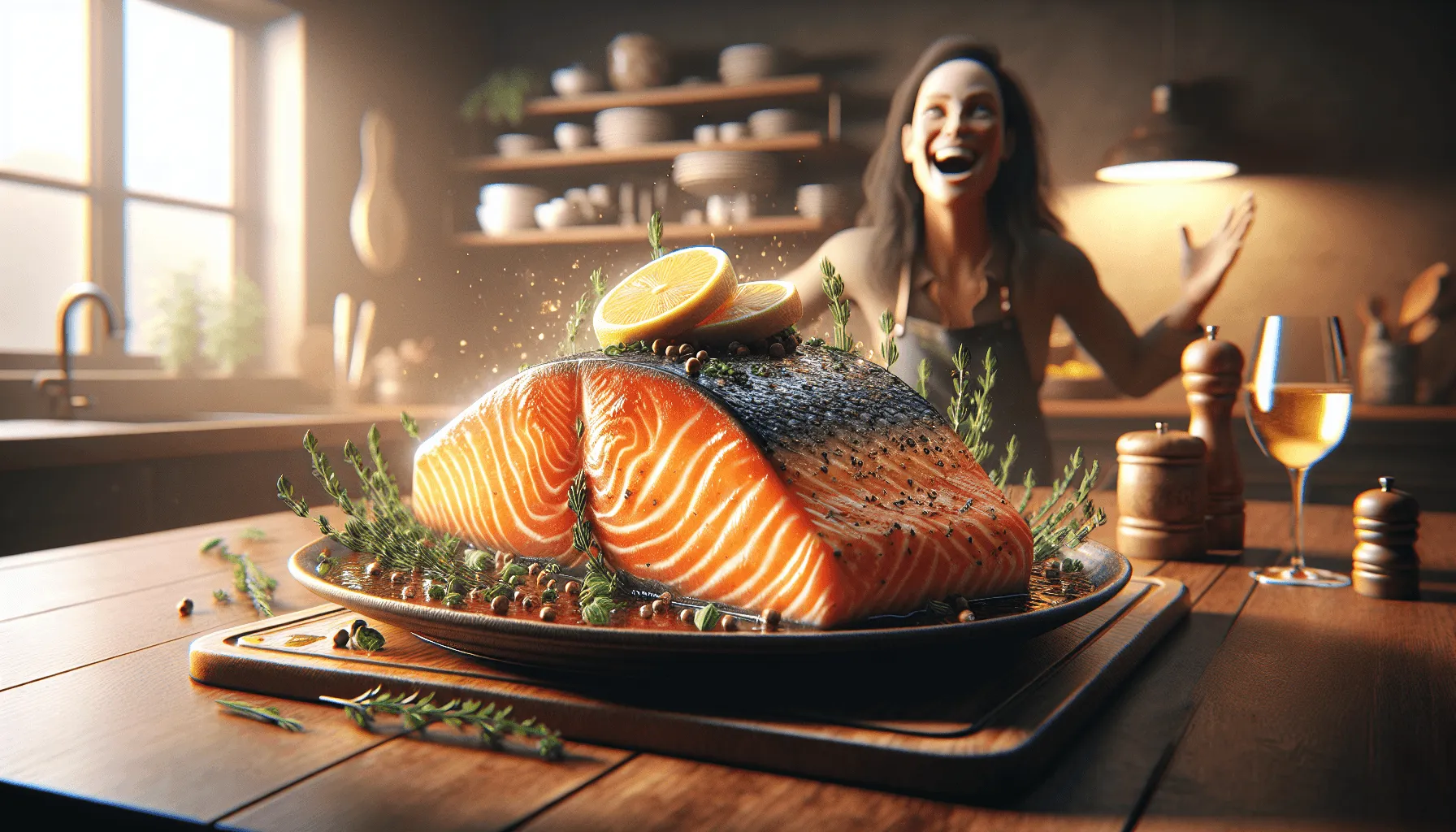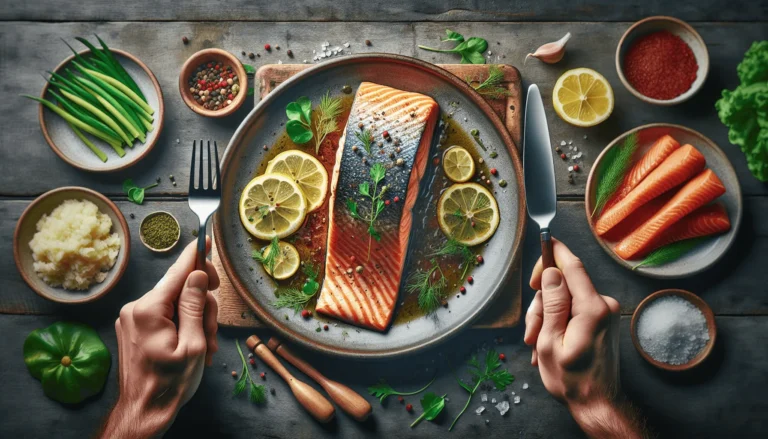Baked salmon is a popular dish, cherished for its delicious flavor and impressive health benefits. As a rich source of omega-3 fatty acids, high-quality protein, and essential vitamins, salmon supports heart health, brain function, and overall well-being.
In this article, you’ll learn:
- The ideal baking temperature for salmon: Discover why 400°F is recommended.
- Tips for perfect results: From using a thermometer to choosing the right seasonings.
- Creative flavor variations: Explore new marinades and toppings to elevate your dish.
This guide has you covered whether you’re wondering “how long to bake salmon at 400” or curious about different recipes.
The Ideal Baking Temperature for Salmon
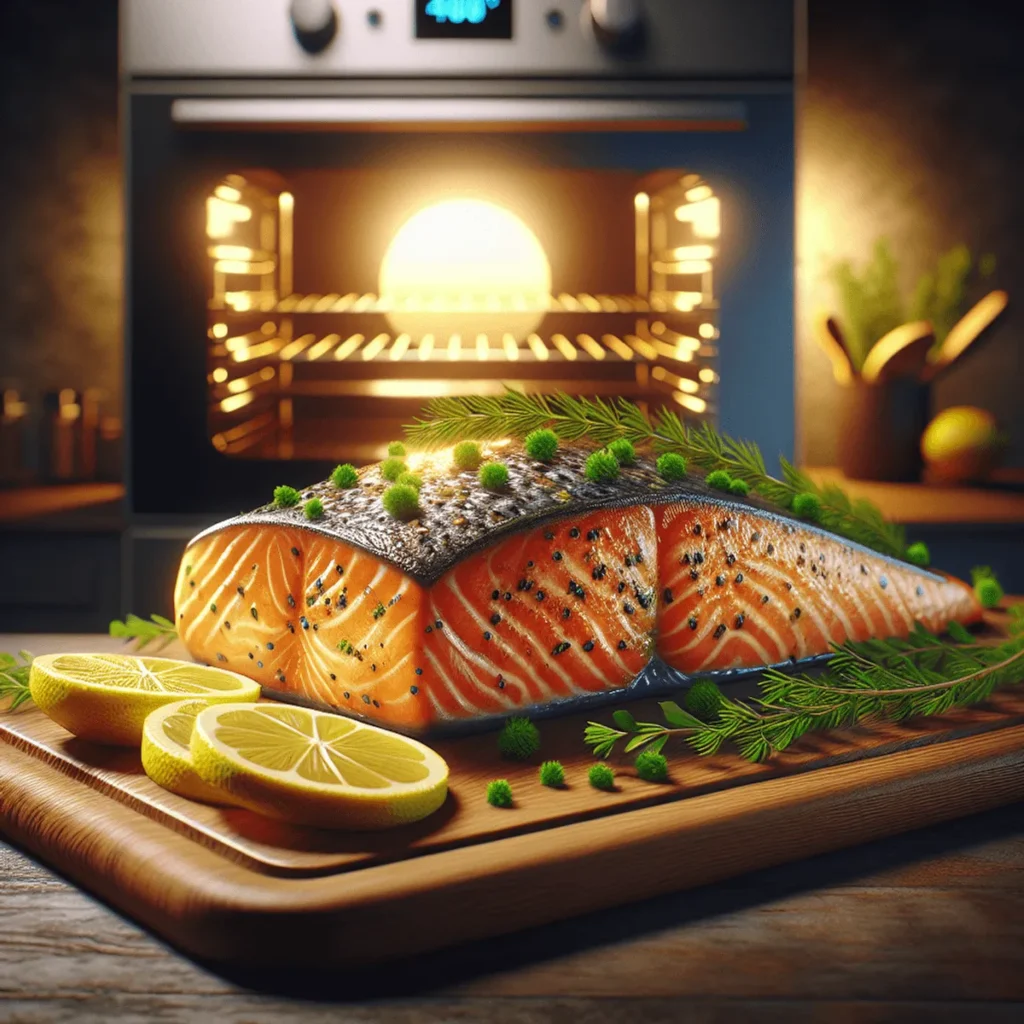
Baking salmon at 400°F is widely recommended for achieving a perfectly cooked, moist, and flavorful dish. This temperature allows the fish to cook evenly without drying out, making it ideal for both novice and experienced cooks.
General Baking Time Based on Thickness
When baking salmon at 400°F, the cooking time varies based on the thickness of the fillet:
- 1-inch thick fillets: Bake for 10-15 minutes.
- Thicker fillets (over 1 inch): May require closer to 15-18 minutes.
- Thinner fillets (under 1 inch): Could be done in as little as 10-12 minutes.
The rule of thumb is to bake salmon for about 12-14 minutes per inch of thickness. For instance, if you have a fillet that is approximately 1.5 inches thick, aim for a baking time of around 18 minutes.
Monitoring Internal Temperature
To ensure your baked salmon reaches perfect doneness:
- Use a thermometer to check the internal temperature.
- The salmon is fully cooked when it reaches an internal temperature of 145°F.
For best results, consider removing the salmon from the oven when it hits around 135°F, then let it rest for a few minutes. The residual heat will continue cooking the fish, bringing it up to the desired temperature without overcooking.
How Thickness Affects Cooking Time
Fillet Thickness and Doneness
The thickness of your salmon fillet significantly affects cooking time and doneness:
- Thicker fillets generally take longer to cook through and may need closer attention to avoid undercooking in the center while ensuring the edges do not dry out.
- Thin fillets cook faster and may require less time in the oven to avoid becoming overly dry.
Adjusting Time Based on Varying Fillet Sizes
To adjust cooking times based on varying fillet sizes:
- Measure Thickness: Start by measuring the thickest part of your salmon fillet.
- Calculate Time: Apply the general guideline of baking 12-14 minutes per inch of thickness.
- Check Temperature: Always verify doneness with an internal thermometer reading of 145°F.
This method ensures that regardless of whether you’re preparing a larger whole side or individual portions, your baked salmon will achieve optimal texture and flavor.
Tips for Achieving Moist and Flavorful Baked Salmon
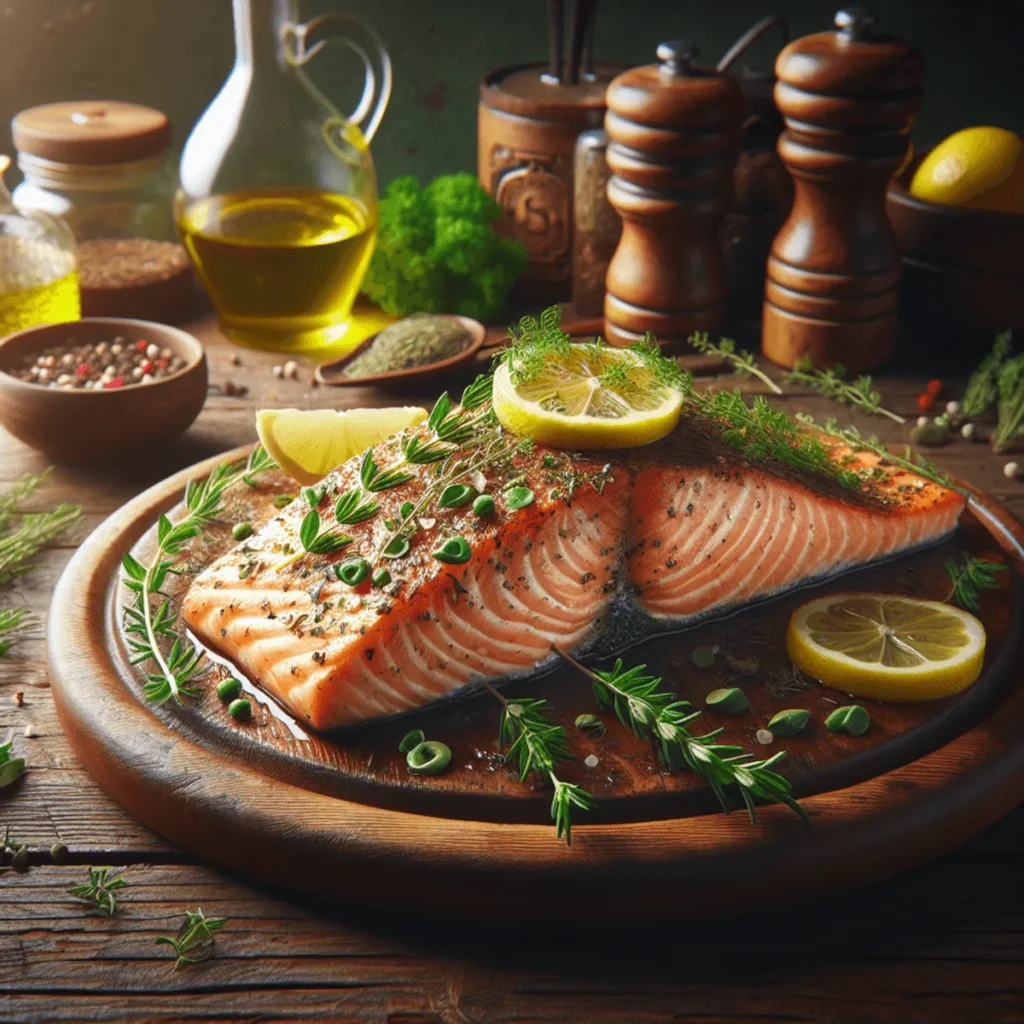
Achieving moist baked salmon requires attention to detail. A few essential tips can ensure your salmon is both flavorful and perfectly cooked every time.
Avoid Overcooking the Fish
One of the most critical aspects is avoiding overcooking. Salmon can quickly become dry if left in the oven too long. The general rule is to bake salmon for about 12-14 minutes per inch of thickness at 400°F. For example, if your fillet is half an inch thick, aim for a baking time of around 6-7 minutes.
Use a Thermometer for Accuracy
A kitchen thermometer can be your best friend when baking salmon. The USDA recommends an internal temperature of 145°F for fully cooked fish. To achieve this without overcooking, consider removing the salmon from the oven when it reaches around 135°F. Letting it rest for a few minutes will allow residual heat to bring it up to the perfect temperature.
Recommended Seasonings and Marinades
Seasoning plays a massive role in enhancing the flavor of baked salmon:
- Salt and Pepper: Basic but effective, these staples bring out the natural flavors of the fish.
- Lemon Zest: Adds a bright, tangy note that complements salmon’s rich taste.
- Herbs: Dill, parsley, and thyme are excellent choices to add depth and freshness.
- Marinades:
- Teriyaki: Provides a sweet and savory glaze that caramelizes beautifully in the oven.
- Honey Garlic Butter: A blend of melted butter, honey, minced garlic, and a splash of lemon juice creates an irresistible coating.
To apply marinades, let the fish sit in the mixture for at least 15-30 minutes before baking to allow the flavors to penetrate.
Using these tips will help you create moist baked salmon that is both delicious and visually appealing. Proper seasoning and avoiding overcooking make all the difference.
Choosing and Preparing Your Salmon for Baking
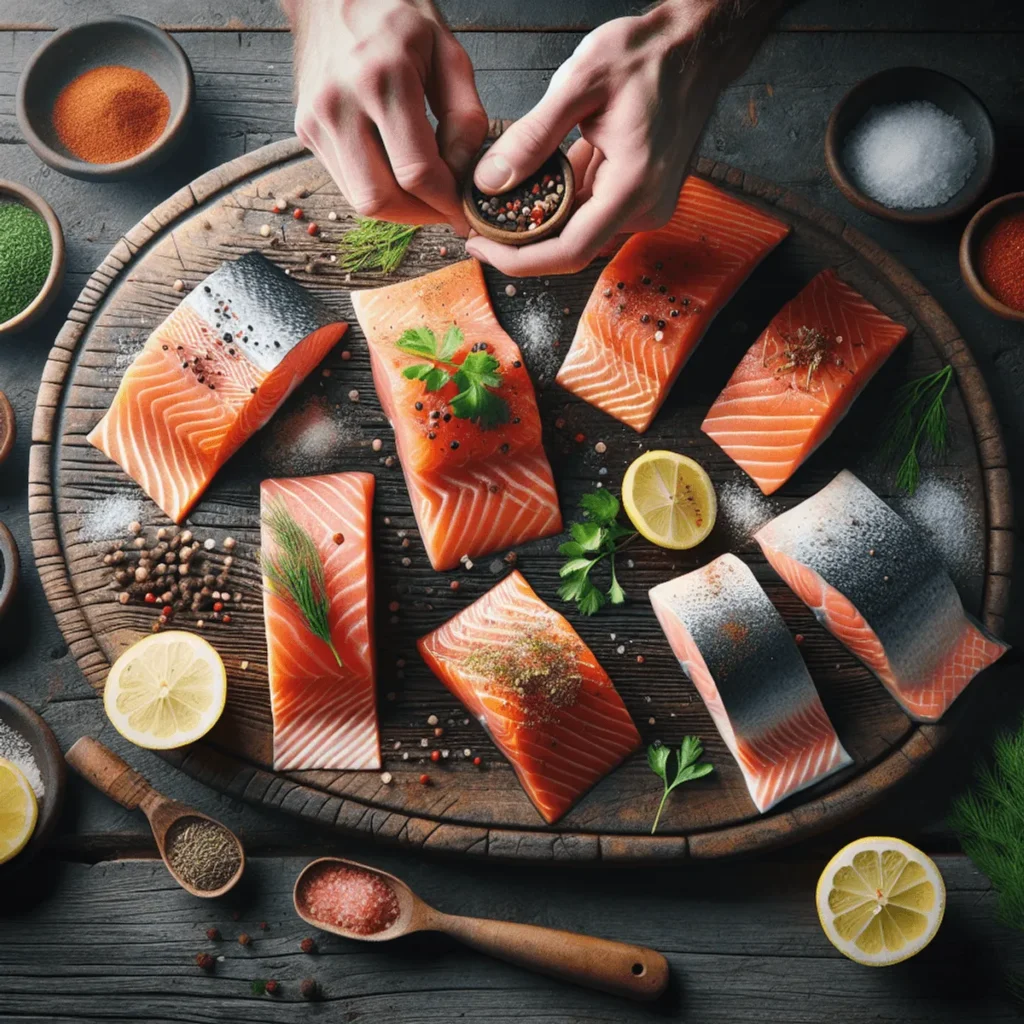
Different types of salmon offer unique flavors and textures, making your choice an important first step. Here’s a quick guide to help you decide:
- Coho Salmon: Known for its mild flavor and medium fat content, coho salmon is a versatile option that works well with various seasonings.
- Sockeye Salmon: This variety is rich in flavor and has a deep red color. Its firm texture makes it ideal for baking.
- Atlantic Salmon: Usually farm-raised, Atlantic salmon is milder in taste and has a higher fat content, resulting in a tender, buttery texture.
Selecting Fresh vs. Frozen Salmon
When choosing between fresh and frozen salmon, consider these points:
- Fresh Salmon: When available, fresh salmon offers the best taste and texture. Look for clear eyes, shiny skin, and firm flesh.
- Frozen Salmon: A convenient option that can be just as tasty if properly thawed. Ensure it’s vacuum-sealed to maintain quality.
Proper Preparation
Proper preparation ensures your baked salmon turns out perfectly:
- Cleaning: Rinse the salmon under cold water to remove any scales or debris.
- Drying: Pat the fillet dry with paper towels. This step is crucial for achieving a crispier exterior.
- Prepping Your Baking Sheet: Line your baking sheet with aluminum foil or parchment paper to prevent sticking and make cleanup easier.
Common Queries
Many people wonder about specifics like “how long do I bake salmon at 400?” or “how long to bake frozen salmon at 400?”
- For fresh salmon, bake at 400°F for 10-15 minutes per inch of thickness.
- For frozen salmon, add an extra 5-7 minutes to the baking time without thawing first.
These guidelines ensure you achieve moist, flavorful results every time.
By understanding different salmon varieties and preparing them correctly, you’re well on your way to mastering how to bake salmon at 400°F.
Serving Suggestions and Leftover Storage Tips
Complementary Side Dishes for Baked Salmon
Pairing your baked salmon with the right sides can elevate your meal. Here are some complementary options:
- Rice: A simple side of steamed white or brown rice can balance the rich flavors of the salmon.
- Roasted Vegetables: Options like asparagus, Brussels sprouts, or carrots add texture and nutritional value.
- Salads: A fresh salad with mixed greens, cucumber, and a light vinaigrette provides a refreshing contrast.
- Quinoa: This protein-packed grain offers a nutty flavor that pairs well with salmon.
These side dishes not only complement the baked salmon but also contribute to a healthier diet, which is beneficial if you’re trying to make healthier choices in food.
Best Practices for Reheating Baked Salmon
To retain moisture and flavor when reheating baked salmon:
1. Oven Method:
- Preheat your oven to 275°F.
- Place the salmon on a baking sheet lined with foil.
- Add a splash of water or broth to keep it moist.
- Cover loosely with foil and heat for about 10-15 minutes.
2. Microwave Method:
- Place the salmon on a microwave-safe plate.
- Add a small amount of water or broth.
- Cover with a microwave-safe lid or plastic wrap (leaving a small vent).
- Heat on low power for 2-3 minutes, checking halfway through.
These methods ensure that your leftover salmon stays juicy and flavorful.
Experiment with Your Own Salmon Recipes!
Exploring diverse recipes can elevate your salmon baking skills. Learning how to bake salmon properly opens a world of culinary possibilities. You might start with basic seasonings like salt, pepper, and lemon zest but don’t stop there.
Consider experimenting with:
- Marinades: A homemade teriyaki or honey garlic butter marinade can introduce new flavors.
- Herbs and Spices: Fresh dill, parsley, or even a sprinkle of smoked paprika can add depth.
- Toppings: Try a crust of crushed nuts or panko breadcrumbs for added texture.
Understanding how long to bake salmon at 400°F is crucial for perfect results every time. Adjust your cooking time based on the thickness of your fillet and internal temperature for precise doneness. This approach encourages you to try new techniques and create signature dishes in your kitchen.
FAQs (Frequently Asked Questions)
How long do I bake salmon at 400°F?
The recommended baking time for salmon at 400°F is typically between 10 to 15 minutes per inch of thickness. It’s important to monitor the internal temperature, which should reach 145°F for doneness.
What are some tips for achieving moist and flavorful baked salmon?
To achieve moist and flavorful baked salmon, avoid overcooking the fish. Use a thermometer for accuracy, and consider seasoning with salt, pepper, lemon zest, or using marinades like teriyaki or honey garlic butter.
What types of salmon can I use for baking?
You can use various types of salmon for baking, including coho salmon, sockeye salmon, and Atlantic salmon. Each type has its unique flavor profile, so choose based on your preference.
How should I prepare my salmon before baking?
Before baking, ensure you select fresh or properly thawed frozen salmon. Clean and dry the fillet thoroughly to enhance flavor and texture during cooking.
What are some good side dishes to serve with baked salmon?
Complementary side dishes that pair well with baked salmon include rice, roasted vegetables, and salads. These sides enhance the meal while balancing the flavors of the fish.
Can I experiment with different flavors when baking salmon?
Absolutely! Feel free to try different recipes and flavor variations beyond what’s covered in this article. Experimenting with marinades and seasonings can lead to delicious new dishes.

